“The 118th Congress should address four critical domains to improve our Nation’s preparedness for future pandemic threats: 1) accountability and disease surveillance; 2) WHO reform; 3) engagement with the private sector; and 4) restructuring the USG’s response to pandemics.”
COVID-19 has killed over one million Americans and caused catastrophic social and economic disruptions in our country and around the world. But the United States has yet to make the right investments in domestic and international preparedness to meet the next pandemic threat, which could emerge at any time and be even more deadly.
Americans’ continued vulnerability to pandemic threats should be a higher priority for the Biden Administration, Congress, and future administrations. Pandemic threats that seem far away do not stay distant for long. COVID-19 demonstrated how a local outbreak can become a pandemic when humans and systems fail to do everything in their power to stop it. With over one million Americans dead, nearly three years of economic growth and public education lost, and a destabilized world that benefits our adversaries, preventing the next pandemic threat from inflicting similar damage must be a top national security priority.
Pandemic Preparedness is a Constant, Consistent National Security Requirement
While the sources of pandemic threats vary, how we prepare for them is largely the same and relies heavily on international cooperation and capability to respond quickly to an outbreak at its source. Shared, global vulnerability to pandemic threats requires unwavering commitment to shared obligations for real-time disease surveillance, reporting, and response. However, even after decades of investment, governments and health institutions in many countries cannot detect new diseases quickly, report cases transparently and accurately to a global network, nor mobilize immediately to limit an outbreak’s spread. The capabilities essential to delivering on the vision of the International Health Regulations (IHRs) are varied, weakly coordinated, and depend too heavily on parties whose political commitment is uncertain.
In the Wuhan outbreak, the government of the People’s Republic of China (PRC) failed to uphold, and actively worked to undermine, the basic tenets of mutual defense and the binding provisions of the IHRs. But countries that are unable to meet the requirements of the IHRs are a threat to global health security as well. A lack of national capacity and other institutional weaknesses in regions from which novel pathogens are most likely to emerge is a major global vulnerability at least as great as the PRC’s refusal to abide by the IHRs. Addressing this weakness must be an urgent priority for the U.S. Government (USG), the international institutions we lead and to which we contribute financially, and societies the world over.
The COVID-19 pandemic also revealed that the social, political, and economic disruptions it caused were fertile ground for the opponents of the United States and a peaceful, free international order. For example, the disorder produced by the pandemic created an environment that Russia judged as supportive of an invasion of Ukraine and provided a pretense for organized efforts to undermine global intellectual property protections and free markets. The United States should align these efforts with a strategic approach to the TRIPS agreement that upholds intellectual property protections that support continued biomedical innovation.
The World Health Organization (WHO) is the only international institution specifically built to serve as a foundation for shared defense against health threats, so the failures and weaknesses it displayed during COVID-19 are troubling. The essential roles for which the WHO was created, to guide global norms for public health and respond to outbreaks of dangerous pathogens, cannot easily be reconstituted elsewhere. The WHO’s detours in recent decades into social-political issues, as well as the inherent limitations of its consensus-based decision-making structure beholden to the governments of its Member States, are persistent barriers to necessary change.
The global health architecture that failed in COVID-19 is being rebuilt, with or without U.S. leadership, and the outcome is far from guaranteed. The process is vulnerable to being hijacked for other agendas, including undermining the fundamental role of the private sector. The United States cannot afford to withdraw from the WHO and cede the organization to our adversaries, but it is imperative that we reform and reign in the institution with the diplomatic assistance of like-minded nations. Only the United States can lead a successful campaign to reform the WHO and counter Beijing’s ambitions.
The Fundamental Importance of American Leadership
The United States historically has been the leader in biotechnology and global health innovation, often through investments made possible by the American taxpayer. Most recently and consequentially, the USG’s incentivization of the private sector under Operation Warp Speed has fueled a revolution in the science of vaccine development, that resulted in 100 million COVID-19 vaccine doses administered to Americans within a year, and hundreds of millions shared worldwide since then. This powerful public-private model has delivered historic global goods, saved countless lives, and stands in stark contrast to the central, command-driven approach favored by many in academia and foreign governments.
The significant U.S. investments in global health begun or expanded during the Bush Administration, including the President’s Emergency Plan for AIDS Relief (PEPFAR), the President’s Malaria Initiative (PMI), the Global Fund, Gavi, the efforts to eradicate polio and neglected tropical diseases, and other programs, are an incomparable foundation for building a global mutual defense against pandemic threats. The resulting close working relationships created over the last 20 years between the USG and numerous governments and community groups constitute an asset, akin to combined military training, that can pay-off in unexpected future contingencies. The United States should continue to leverage these assets for global health security and drive incentive-based, country-led investment and innovation in pandemic preparedness and public health. But the USG cannot create this global architecture alone, and non-governmental channels of information like social media platforms should play an integral role in creating a novel pandemic surveillance system built with 21st century technology. In addition, faith-based organizations are natural, inimitable partners in this effort; in many countries, they are the first point of assistance, which often gives them knowledge of outbreaks before governments.
The unusual nature of pandemic threats defies the traditional divisions between mandates, roles, and responsibilities among USG departments and agencies. The USG’s pandemic strategy should cut across institutions with the responsibility and budget to pursue research and development, foreign assistance, diplomacy, public health, and national security. Better coordination of these disparate efforts and funding streams is essential to successful U.S. leadership.
Addressing Future Threats
The 118th Congress should address four critical domains to improve our Nation’s preparedness for future pandemic threats: 1) accountability and disease surveillance; 2) WHO reform; 3) engagement with the private sector; and 4) restructuring the USG’s response to pandemics. The FAL Global Health Security Working Group recommends that Congress hold a hearing on each of these critical domains to accomplish the following:
- Ensure accountability for COVID-19 while enhancing early warning for future pandemic threats. Congress should investigate the origins of COVID-19 and the nefarious actions of the Chinese Communist Party that resulted in a global crisis—but an investigation must be the beginning, and not the end, of pandemic preparedness policy. Congress should facilitate the USG’s work with allies, international health partnerships, the technology industry, and foundations, to improve “early warning” systems of surveillance and reporting on outbreaks that do not depend on the cooperation of governments. Congress also should encourage the use of innovative technology in these reporting networks, including to integrate information gathered by the U.S. Intelligence Community and that of like-minded countries with data from private-sector entities.
- Pursue WHO reform in cooperation with the governments of like-minded nations. Congress should insist that the USG commit diplomatic and economic muscle in defense of our national interests at stake at the WHO and in other international fora. Congress should expect that the USG will work to ensure that the WHO:
- concentrates on fulfilling its limited, but essential, technical core responsibilities;
- ends its hostility to the private sector and instead partners with it;
- is depoliticized, by fixing its lack of accountability and structural and policy flaws that allow for manipulation for malign purposes; and
- becomes a vehicle for accountability—rather than a vehicle to avoid it—for mutual defense against pandemic threats.
- Bring in the private sector and faith-based and community organizations to guarantee multiple lines of defense. Congress should harness markets and innovation by investing in more public-sector incentivization of R&D for emerging threats and vaccine development—just like the model unleashed in Operation Warp Speed—and push the USG to invest more in the capacity of local faith-based and community organizations that provide health care. Congress also should expect the USG to use its diplomatic and economic might to support the private sector at international fora like the WHO.
- Strengthen the global pandemic preparedness and response (PPR) architecture within the USG. Congress should set an expectation that any proposal to streamline interagency USG cooperation in pandemic preparedness should follow these guiding principles:
- The urgency and scope of the challenge is far greater than any one department or agency can take on;
- Effective coordination will require detailed and comprehensive joint planning and the oversight of execution across various appropriations; accountability without cross-department budgetary authority is unlikely to be successful; and
- Because PPR depends on international cooperation, buy-in, and accountability, the USG must commit diplomatic and economic leverage to increase other governments’ financial investments in PPR, aligned behind a strategy of shared vulnerability and mutual defense.
Though it is beyond the scope of this foreign affairs-focused paper, multiple lines of effort should also be taken on the domestic preparedness front. Objectives such as strengthening supply chains and government stockpiles of medical products, reforming the Centers for Disease Control and Prevention to make it more effective in future crises, accelerating biomedical research related to pandemic threats, and improving government collection and analysis of medical data deserve attention from Congress and relevant executive branch agencies. In Congress, some members, including on the Senate Committee on Health, Education, Labor, and Pensions, have advanced legislation to improve domestic preparedness after COVID-19, but these measures have not been considered on the floor of either chamber.
The COVID-19 pandemic and the ensuing economic, social, and geopolitical disruptions deserve an investigation in the 118th Congress. Preparing to protect U.S. interests and the American people during the next, inevitable outbreak is an even greater national security imperative. It is impossible to know when and where the next pandemic will arise, but we know COVID-19 will not be the last. With an improved federal PPR architecture, the United States should lead the world in enhancing global disease surveillance and reporting systems, reforming the WHO with the support of our allies, and engaging the private sector in innovative preparation.

